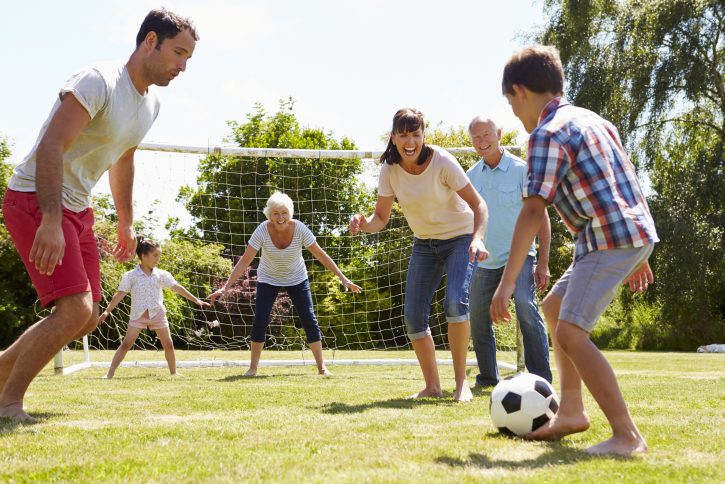
Article originally posted July, 2021.
No matter your age, physical activity is an important part of maintaining your physical and mental health. In addition to helping maintain a healthy weight, regular physical activity has numerous health benefits, including: strengthening your heart and lungs, lowering your cholesterol and blood pressure and improving your mood.
Below are recommendations for activity level by age group. Please note: aim for the recommended activity level, but listen to your body and do only what you are able. Speak to your healthcare provider before beginning any new fitness routine.
3-5 Years
Children 3-5 years old get their physical activity through active play. Kids should be physically active throughout the day, every day and experience a variety of activities.
6-17 Years
Children 6-17 years old should get 60 mins or more of moderate-to-vigorous intensity physical activity every day through a variety of physical activities. Make sure that each week your child’s activity includes: activities that make their heart beat faster (aerobic), like soccer, biking or basketball; activities that build muscle, like climbing or push-ups; and activities that strengthen bones, like running, gymnastics or jumping rope.
18-64 Years
It is recommended that adults get at least 150 minutes a weekof moderate aerobic activity. Walking, swimming, hiking, gardening or dancing are all good ways to increase your heart rate. Adults should also include at least 2 days a week of strength exercises, like lifting weights, resistance band exercises or calisthenics.
65 Years and Older
It is recommended that older adults get at least 150 minutes a weekof moderate aerobic activity. Walking, swimming, hiking, gardening or dancing are all good ways to increase your heart rate. Older adults should also include at least 2 days a week of strength exercises, like lifting weights, resistance band exercises or calisthenics. Additionally, older adults should practice activities that improve balance and flexibility, such as stretching, Pilates or standing on one foot.
Adults with Chronic Conditions and Disabilities
Get at least 150 minutes a weekof moderate aerobic activity and at least 2 days a week of strength exercises. Modify activities as needed for your fitness level and capabilities – the most important thing is that you are as active as you can be.
Women Who Are Pregnant or Postpartum
Get at least 150 minutes a weekof moderate aerobic activity. Listen to your body, modify activities as needed for your fitness level and capabilities and do what you can.
To learn more about ways you can stay active, click here.